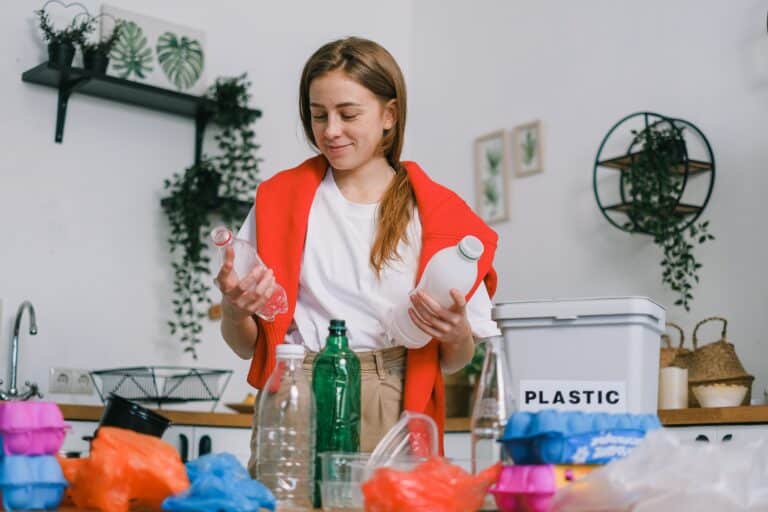Each and every one of us wants to ensure that the things we use and the environment we live in are safe for our health. Have you ever questioned the safety of HDPE plastic, which is used to create common household items? While there have been disagreements on HDPE’s safety, this article goes into great detail regarding the material’s possible toxicity. Let’s find out, if HDPE is potentially safe or toxic to humans, what studies can tell us, and its consequences on health.
What is the purpose of HDPE?

Before diving into whther HDPE is toxic to humans or not, let us find out where we will find HDPE. The material high-density polyethylene (HDPE) is very effective and versatile and is utilized in a wide range of applications. It is a well-liked option due to its properties of lengthy shelf life that comes with its strength and durability. Due to all these reasons, HDPE is widely used since the 1950s, HDPE in a wide range of sectors, including food packaging, pharmaceutical, medical, automotive, and many more. Additionally, it is simple to sterilize, which makes it the perfect option for medical products or devices that must undergo some kind of sterilization before even use.
Is Hdpe Toxic To Humans?
HDPE is not thought to be hazardous to people. This is because it doesn’t include any potentially dangerous substances that could harm your health. However, it’s crucial to remember that when HDPE comes into touch with food or beverage goods, minute amounts of chemicals may leak into those products. It is vital to be aware of this possible problem even if these chemicals are not thought to be dangerous to people yet.
Is HDPE material toxic?

Did you know that HDPE is a thermoplastic made from petroleum? HDPE is a semi-crystalline polymer, not a synthetic polymer like other plastics. This indicates that it is formed of shorter chains of polymers rather than long chains of monomers, as are other plastics. HDPE is also known as “linear low density polyethylene” (LLDPE). In terms, of manufacturing, creating HDPE involves two steps. First, the gaseous hydrocarbon ethylene is transformed by a process known as “cracking” into a liquid. Large molecules are broken down into smaller ones during this cracking process. The second process is referred to as “polymerization.” In this step, the ethylene molecules are combined to form long chains of polyethylene molecules. Well, it is safe to assume that HDPE material is safe and not toxic to humans.
Is HDPE toxic when heated?
HDPE stands for high-density polyethylene. This type of plastic is often used in food packaging, but it can also be found in toys, pipes, and other household items. When heated, HDPE can release toxins into the air, which can be harmful to human health. Some studies have linked HDPE exposure to cancer and other health problems.
Does HDPE leach chemicals?

When considering buying food storage containers or reusable water bottles made of high-density polyethylene, a lot of people are asking this crucial question (HDPE). Although HDPE is a widely used plastic substance, could it be contaminating your food and beverages with dangerous toxins? Since the 1970s, scientists have been studying the possibility of HDPE could leach chemicals. In accordance with this investigation, certain compounds could leak out of HDPE over time. For instance, it has been discovered that BPA and phthalates may migrate at very low quantities from HDPE products into foods and drinks. However, these amounts are below the established safety limits. Thus, so far HDPE is not toxic to humans.
How long does HDPE take to break down?
High-density polyethylene, or HDPE, is a kind of plastic that degrades very slowly. It may not entirely degrade for hundreds or perhaps thousands of years. This is one of the reasons why HDPE is so commonly used in products like plastic bottles and containers. So, it can last a long time without breaking down. Well, after some HDPE, will eventually degrade, especially if it is exposed to sunlight or other factors. If HDPE does begin to degrade, it will split into tiny plastic fragments. These smaller fragments could subsequently get swallowed by animals or wind up in the environment and be harmful. Therefore, even though HDPE may not decompose right away, it’s crucial to keep in mind that it will eventually degrade while causing harm to the environment. To lessen the amount of HDPE that enters the environment, it is crucial to recycle or reuse HDPE products whenever possible.
Final Word!
In summary, HDPE is not considered to be toxic to humans. The substance is known for its sturdiness, durability, and chemical resistance. It can be used safely for a number of purposes, such as toys, medical equipment, and food preservation. And, this is not all, we can expect to get more benefits in the near future as the research on HDPE is still continuing to this day. In addition, after reading the article, if you are looking forward to getting HDPE plastic products look no further than JarsBottles. We have the high-quality and durable plastic packaging that you are looking for!














